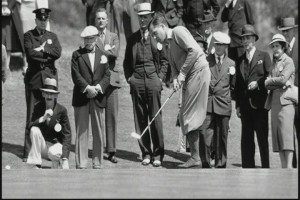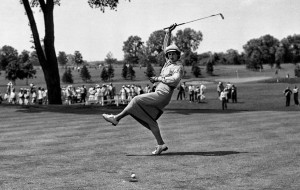Recently we looked at the costs of the Sochi Winter Olympics and how they compared to all previous Winter Olympic costs. Let’s do a similar analysis today for the Summer Olympics.
We’ll use the same methodology we used for the Winter Olympics. We’ll compare constant costs by using historical inflation values for the US dollar against 2000 dollar values. We will then also compare constant costs against the number of athletes competing and the number of athletes x sports, again because the more athletes, the more costs involved, and the more sports (or disciplines), usually the more stadia that need to be constructed. In all cases, we have used the original currency figures and corrected against US dollars for that era.
So here are the absolute numbers and the numbers corrected against inflation.
[table]
Year,Cost,Value (2000$),ConstantCost
1896,$0.45,23.610,$19060
1900,$0.70,22.250,$31460
1904,$0.30,20.763,$14448
1908,$0.39,19.000,$20527
1912,$0.67,17.740,$37486
1920,$0.50,9.629,$51927
1924,$1.00,9.736,$102710
1928,$1.18,9.576,$123219
1932,$1.00,10.958,$91261
1936,$30.00,12.162,$2466642
1948,$2.90,7.472,$388137
1952,$4.94,6.400,$771684
1956,$13.60,6.213,$2189087
1960,$71.20,5.724,$12439216
1964,$1926.00,5.446,$353624584
1968,$175.00,4.988,$35083379
1972,$611.90,4.112,$148812522
1976,$1382.70,3.098,$446312378
1980,$2000.00,2.296,$871131414
1984,$546.00,1.673,$326303634
1988,$4047.00,1.467,$2758928690
1992,$7000.00,1.224,$5717756457
1996,$1686.00,1.094,$1540991021
2000,$5600.00,1.000,$5600000000
2004,$11600.00,0.905,$12815660214
2008,$44000.00,0.803,$54764542742
2012,$14600.00,0.741,$19698345130
[/table]
Above, cost is listed in millions of US$ while constant cost is listed in thousands of US$. One thing to note above – 1900, 1904, and 1920 original costs are estimates. The figures are simply not available. For 1900 and 1904 it is mainly because the Games were held as parts of the World Fairs, and those figures are available for World Fair costs, but it cannot be determined exactly how much was allocated to the Olympic events.
So as expected, even corrected against inflation, Beijing was by far the most expensive Summer Olympics ever. In fact, as we’ll show later, it was more expensive, in constant dollars, than all previous Summer Olympics. Beijing is actually close to being more expensive than all other Olympic Games, in real and constant costs, even adding in the costs for London in 2012.
What about if we compare using constant dollars against number of athletes? And we’ll also use constant dollars against a new figure – number of athletes x number of sports – to take into effect both factors that tend to increase the size of cost of Olympics.
[table]
Year,CC,Ath,Spts,CC/A,CC/A-S
1896,$19060,176,9,$108.29,$12.03
1900,$31460,1224,21,$25.70,$1.22
1904,$14448,650,18,$22.23,$1.23
1908,$20527,2023,23,$10.15,$0.44
1912,$37486,2377,16,$15.77,$0.99
1920,$51927,2664,22,$19.49,$0.89
1924,$102710,3067,19,$33.49,$1.76
1928,$123219,2878,16,$42.81,$2.68
1932,$91261,1334,16,$68.41,$4.28
1936,$2466642,3956,21,$623.52,$29.69
1948,$388137,4073,19,$95.30,$5.02
1952,$771684,4932,19,$156.46,$8.23
1956,$2189087,3344,19,$654.63,$34.45
1960,$12439216,5350,19,$2325.09,$122.37
1964,$353624584,5137,21,$68838.74,$3278.04
1968,$35083379,5557,20,$6313.37,$315.67
1972,$148812522,7113,23,$20921.20,$909.62
1976,$446312378,6073,23,$73491.25,$3195.27
1980,$871131414,5259,23,$165645.83,$7201.99
1984,$326303634,6798,25,$47999.95,$1920.00
1988,$2758928690,8453,27,$326384.56,$12088.32
1992,$5717756457,9386,29,$609179.25,$21006.18
1996,$1540991021,10339,31,$149046.43,$4807.95
2000,$5600000000,10648,34,$525920.36,$15468.25
2004,$12815660214,10561,34,$1213489.27,$35690.86
2008,$54764542742,10901,34,$5023809.08,$147759.09
2012,$19698345130,10520,34,$1872466.27,$55072.54
[/table]
CC=constant costs (thousand US$); CC/A=constant costs/athlete; CC/A-S=constant costs/athlete-sport.
Once again, Beijing was way more expensive, in terms of constant costs per athlete and constant costs per athlete-sports, than any other Summer Olympics. We will also show that it was more expensive for both parameters than all previous Summer Olympics combined.
One other thing to note is how much the costs have inflated, against constant costs relative to the size of the Games. In 1908, London spent less than 50 cents on each athlete x sport (or against the size of the Games), in 2000 dollars, while Beijing spent almost $148,000 on the same parameter – an actual Olympic inflation rate of just under 30 million%!
In the following we will compare each Summer Olympics to the combined costs of all previous Summer Olympics. Here are those numbers.
[table]
Year,CAPCC,CAPC/A-S,Notes
1896,—,—,
1900,1.651,0.102,
1904,0.286,0.093,
1908,0.316,0.030,
1912,0.438,0.066,
1920,0.422,0.056,
1924,0.587,0.105,
1928,0.444,0.144,
1932,0.228,0.201,
1936,5.013,1.164,>previous
1948,0.131,0.091,
1952,0.231,0.137,
1956,0.532,0.503,
1960,1.972,1.189,>previous
1964,18.863,14.550,>previous
1968,0.094,0.090,
1972,0.365,0.238,
1976,0.802,0.676,
1980,0.869,0.909,
1984,0.174,0.127,
1988,1.254,0.709,
1992,1.153,0.721,
1996,0.144,0.096,
2000,0.458,0.282,
2004,0.719,0.507,
2008,1.788,1.393,>previous
2012,0.231,0.217
[/table]
CAPCC=compare all previous constant costs; CAPCC/A-S=compare all previous constant costs/athlete-sport.
This may not seem obvious so let’s look at it. In 1936 Berlin was 5.013 times more expensive, in constant costs, than all previous Summer Olympics combined, and it was 1.164 times more expensive in terms of constant costs per athlete-sport. When a Summer Olympics is more expensive on both parameters, I have used the note “>previous”.
It turns out that only 4 times a Summer Olympics has been more expensive on both parameters or “>previous” (it actually occurred 6 times for the Winter Olympics, despite less celebrations). This occurred at the following Summer Olympics:
[table]
Year,CAPCC,CAPC/A-S
1936,5.013,1.164,>previous
1960,1.972,1.189,>previous
1964,18.863,14.550,>previous
2008,1.788,1.393,>previous
[/table]
And those four times occurred at Berlin in 1936, Rome in 1960, Tokyo in 1964, and Beijing in 2008. For Berlin, Tokyo, and Beijing, this is relatively easily explained. All three cities wanted to “show the world something.” Berlin and Hitler wanted to show the superiority of the German Reich. Tokyo wanted to show the world that it had recovered from the horrors of World War II and was now a modern superpower. Beijing wanted to demonstrate that it was now one of the world’s superpowers, and put on the biggest show ever. It did, especially when one considers that the usually quoted cost of the Opening Ceremony alone is $300 million, in 2008 dollars, which would actually be about $405 million in constant 2000 dollars. Nice party, but I can hold one like that, too, if you give me $405 million to do it with.
Rome at first site seems harder to explain but can be easily. Rome actually did not build as many stadia as some cities, holding some of the sports and events in ancient Roman stadia, such as wrestling, which was contested at the Basilius of Maxentius. And the Rome OCOG used several facilities in the Foro Mussolino, which had been constructed during the Fascist Era.
However, I refer you to http://itopiarometheeternalcity.blogspot.co.uk/2009/05/rome-1960-olympics-as-catalyst-for.html, a blog article on Rome 1960 entitled, “Rome 1960: The Olympics as a Catalyst for Urban Change.” In this article, the author notes that Rome used the 1960 Olympics to effect major urban and infrastructural changes to their city, which involved designing a comprehensive system of transportation infrastructure throughout the city. For one of the first times the entire Olympic Village was constructed de novo and later converted to public housing. So when one considers that Rome re-did their city, making multiple desired infrastructural improvements, the extreme costs of the 1960 Olympics can be better understood. One can actually make a case that extreme Olympic inflation, with cities using the Olympics to improve their city and show it off to the world, began with Rome in 1960.
And this is one of the problems with this analysis. How much of the above quoted costs are for the operating costs of an Olympics, and how much are for infrastructural improvements to the host cities? Often, the host cities have wanted to make these changes for years but never had the money or the political capital to pull the trigger. But by subsuming the costs under the aegis of Olympic costs, they could get them done. Recent examples include the significant expansion and improvement of Hartsfield International Airport for the 1996 Atlanta Games, and the ring road around Athens and the subway from Athens to Piraeus, all built prior to the 2004 Olympics, but long desired by the Greek capital.
So its difficult, but one thing is obvious. Beijing was the most expensive Olympics ever in terms of constant dollars, but should not be considered the biggest spendthrift in terms of constant dollars analyzed against actual size of the Olympics. The all-time champion for that, Winter or Summer, is Tokyo in 1964, which was either 18 or 15 times more expensive than all previous Olympics, depending on how you analyze it. That is a record far surpassing the biggest such numbers for the Winter Olympics, which were for Grenoble in 1968, at about 7 times costs of previous Winter Games.
One other thing of interest to me was Barcelona in 1992, which also wanted to highlight its city, and did so beautifully, and is often considered one of the greatest of modern Olympics. But it did so relatively efficiently, costing slightly more than previous Olympics in constant dollars, but not more expensive than all previous when compared against the size of the Games.

